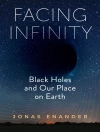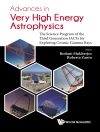Studies in nucleosynthesis and nuclear astrophysics are highly interdisciplinary, encompassing such fields as nuclear physics, stellar structure and evolution, hydrostatics and hydrodynamics, differential equations for following isotopic abundance changes in stellar plasmas and in the interstellar medium, and astronomical observations. Essentials of Nucleosynthesis and Theoretical Nuclear Astrophysics brings together the theoretical aspects of these topics in a single volume, providing the necessary mathematical tools and equations with unified notation to enable studying nucleosynthesis in a variety of astrophysical sites. Essential definitions and theory are presented that will enable the reader to enter the research field with the familiarity of the specialities and specific problems. Useful as a reference work for any researcher in the field of nucleosynthesis and nuclear astrophysics, or a suitable basis for a graduate course on these topics, the book also provides the information necessary to follow discussions of current open questions in the understanding of the origin of the elements.
Key Features
- Offers a concise summary of the most important concepts and equations related to nucleosynthesis and theoretical nuclear astrophysics
- Presents the essential definitions and approaches to help those entering this interdisciplinary field
- Provides the information necessary to follow discussions of current open questions in the understanding of the origin of the elements
The chemical elements that make up everything in the universe are continuously being formed and transmuted in a myriad of stellar environments. Nucleosynthesis is the study of how this happens. Nuclear astrophysics is the study of how nuclear properties of the elements influence the evolution of stellar environments. There is a strong overlap between these two studies but nevertheless, each tries to address different fundamental questions about the universe.
This book written by Thomas Rauscher admirably succeeds to present such a comprehensive coverage more than any other book currently available. It will be a valuable resource for students and researchers for many years to come and will probably become one of the classics in the field.
This is an excellent book which provides an invaluable resource both for students and experienced researchers. I will certainly recommend it to others.
A. C. Shotter, Contemporary Physics, 30 Nov 2021
Tabella dei contenuti
I Essentials
1 Basic properties of stars and the stellar plasma
2 Stellar models
3 Nuclear Physics for Astrophysics
4 Abundance changes in astrophysical plasmas
II Stellar evolution and nucleosynthesis
5 Introduction
6 Stellar evolution
7 Hydrostatic burning phases
8 Origin of the elements beyond Fe
9 Explosive nucleosynthesis
10 Primordial nucleosynthesis
11 Galactic origin of the elements
Circa l’autore
Thomas Rauscher is an active researcher in nuclear physics and astrophysics. He teaches at the University of Basel, is a visiting research Fellow at the University of Hertfordshire, and also works at the Swiss Federal Institute for Intellectual Property in Berne, Switzerland. He is the recipient of a number of prestigious funded fellowships and awards, including the Ludwig Boltzmann Prize from the ӦPG (Austrian Physical Society) for his work in theoretical physics and an Alexander von Humboldt fellowship. He has authored a large number of highly cited publications in scientific journals.












